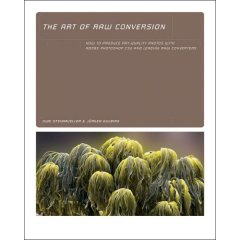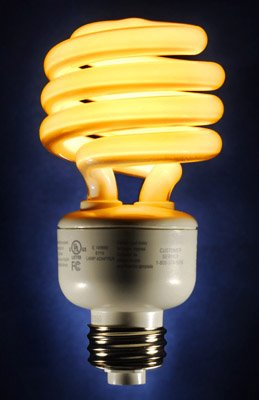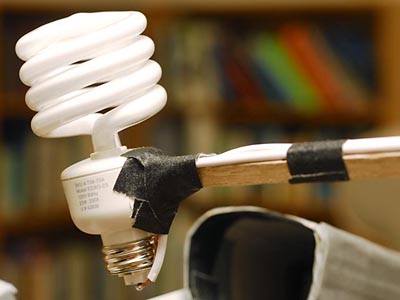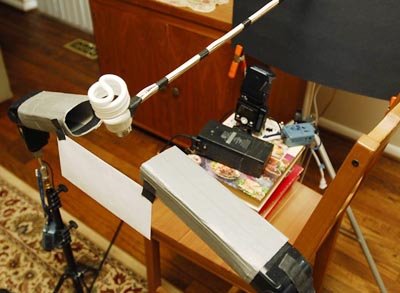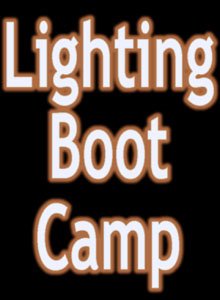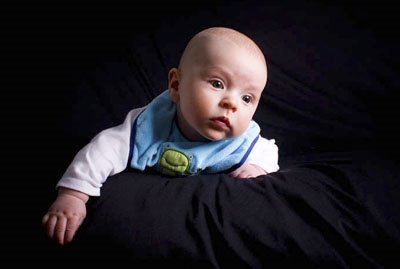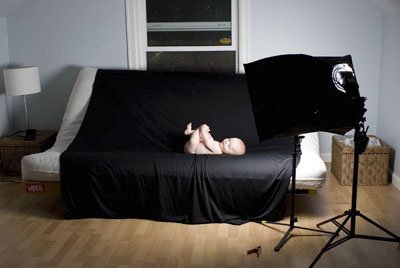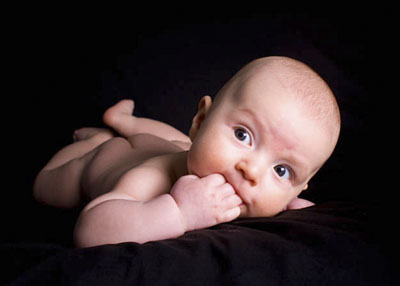
Between assignments I tend to hang out at libraries, bookstores and any place else I might find a decent magazine rack.
It's a constantly renewed source of visual stimulation. I live in the suburbs of Baltimore, MD, so I do not have nearly the magazine diversity someone who lives in, say, New York City might get. But there is still a good new crop of ideas to file away every month.
This is something I have done out of habit for twenty years or so. But it occurred to me that some of you might not have thought of this in the same way. So I am going to start including a few of these on Strobist.
The first Off The Rack example is from
Bicycling Magazine's July 2006 cover, which was shot by Patrik Giardino. Please take a few minutes to check out this guy's
website. He is really cranking some powerful and elegant light in his sports/lifestyle genre of photography.
Before I get into the particulars of this one, I want to back up and go into some detail on why trolling the mags can be so beneficial.
First of all, if you have been working your way through
Lighting 101 and
On Assignment, you should have a pretty good handle on
reverse-engineering light. This is one skill you can really improve by regularly scanning the magazine racks.
Better yet, what you are seeing is a distillation of visual ideas that has risen to the top of the barrel by virtue of the cover photo selection process at each individual magazine.
I would remind you that magazine covers are
not the end-all, as far as photos go. They tend to be quick-read, iconic images. Their primary purpose is to try to grab the reader's attention in about a tenth of a second. But much of that stopping power can frequently be attributed to killer light, so they are worth studying.
And the web being what it is, it is easy to look at the cover photog's credit, jot down their name, and be cruising their portfolio in five minutes to get even more inspiration.
Notice that I said
inspiration.
This is not about ripping off cover shots. It
is about constantly seeing how other photographers have solved visual problems - and training your mind to think in a way that will give you that same ability.
Take Bicycling Magazine, for example. They have to come up with a stopper, vertical, room-left-for-type photo of a person on a bike
every month. How's that for working hard to stay out of a rut?
Even worse, how would you like to be the art director for "Oprah" magazine? Same format, every month. Portrait, every month.
Same person on the cover, every month.Hey, don't get me wrong. I like Oprah. But after about 6 months of choosing photos of her for the every single cover of that magazine, I would begin to feel an itch on the roof of my mouth that only the cold steel of a gun barrel could scratch.
Okay, let's take a look at this Bicycling Magazine example, and see what we can glean from it.
The first thing I like to do, assuming a photo has grabbed my attention, is to imagine that I am in the process of taking it. That facilitates the reverse engineering process and also helps me to try to imagine what curve balls the photog had to overcome.
All right, let's look at the light. Regular readers will notice a familiar lighting pattern. If you remember, I used a stripped down version of that in a
cover photo for Varsity a couple of months ago. It's two hard lights, one on each side (and behind) the subject.
Since the lights are hard, you could do this with small strobes. No light-sucking softboxes or umbrellas here. So this idea is
very applicable to us cheapskate SB-types.
So, now you have your aiming-back-at-the-camera cross lights set up. How do we control glare? We
snoot them, of course.
But doing this kind of thing is tricky enough for many people when the subject is standing still, right? And this biker is not just cruising down the street. He is hauling butt.
How would you handle this?
If I am looking to get this photo, I would set up some sort of small marker on the road. Probably in the photo, but it would not appear in the final crop.
This is a simple little technique that gives a shooter an immense amount of control and predictability. And I'd bet dollars to donuts that Giardino used some version of this trick.
Now, we have a small pebble put in the road, right in the sweet spot of the light. Focus on it. Then we have the bike racer do about a bazillion runs right through the chute, and fire right when the front wheel gets to the pebble. (I'd time it for the front wheel to compensate for the lag time of my old, tired brain and trigger finger. You'd have to check out your screen on the back of your camera and adjust, most likely.)
The pebble gives us perfect timing, light and focus - every time. No autofocus needed. The guy also gets shot just as he gets into the sweet spot of the light. The only remaining variable is where the guy's feet are on the pedals when we shoot. I'd be looking for one of the feet moving through the power portion of the cycle - just coming around the top. Just like the magazine chose.
That last variable is solved by repetition. That's why you use multiple runs. Lots of them. If you have everything else nailed down, the repetition will give you choices on pedal location and facial expression. Nail down what you can control, and shoot through what you can't. It really works.
The photo is also shot at a low angle, which makes the biker look that much more powerful and gives the designer a nice, clean, blue background to set type against.
Presto: Killer, three-dimensional biker photo.
And, BTW, sorry about the bad copy shot. This being the last days of June, the July Bicycling issue is yesterday's news. I had seen it a couple of weeks ago when I got the idea to start reverse-engineering some magazine covers. And by the time I got a chance to actually do it I had to scrounge at the library to find a copy. So it was a quick grab with no lights or glass cover.
Now go check out Giardino's
website and see what else he is up to.
 Those of you who have not yet moseyed on over to the Flickr Strobist yakkin' board are missing out.
Those of you who have not yet moseyed on over to the Flickr Strobist yakkin' board are missing out.









